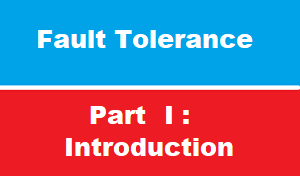introduction
In our conclusion of High Availability article , we have mentioned one disadvantage of HA : which downtime
We said that downtime normally 5 minutes and could be extended to 10 minutes , which could be acceptable for some VMs
But unfortunately
In some high critical application VM , it’s NOT acceptable
>> so we have to find a solution that could decrease downtime = 0 [Yes ZERO]
VMware provide feature FT [ Fault Tolerance ] that could make downtime = ZERO, and data loss = ZERO
FT is usually used for
- business-critical applications that must be available all the time.
- It is also sometimes used for applications that have no native capability for clustering.
How FT work
The concept of Fault tolerance is to make 2 redundant copy of VM [primary and secondary] in two ESXI servers
and any change to primary VM will be immediate synchronized to secondary VM through dedicated [port group] network connection ,so both will identical
Both VM will use same IP address
so if primary VM down accidentally >> ESXI immediately will change connection to secondary replica VM
FT requirement
(FT) has the requirements at three levels :
- cluster requirements
- ESXI host requirements
- and virtual machine requirements
let us to details each one of them :
cluster requirements
- the ESXi hosts in the cluster must have access to the same datastores and networks. >> Done
- a minimum of two FT-certified ESXi hosts with the same FT version or host build number must be used.>> Done
- the ESXi hosts must have FT logging and vMotion networking configured.>> Done : new port group called FT for FT sunch
- vSphere HA must be enabled on the cluster.>> Done already from prev article
- host certificate checking must be enabled in the vCenter Server settings. >> Done
ESXI host requirements
- the hosts must have processors from an FT-compatible processor group.>> Done all esxi server in pioneers.lab are HP Gen10
- the hosts must be licensed for Fault Tolerance.>> Done currently we use trial license which open all features
- the configuration for each host must have Hardware Virtualization (HV) enabled in the BIOS.>> Done
- the hosts must be certified for FT in the VMware HCL.>> Done HP servers
virtual machine requirements
- only VMs with a single vCPU are supported with vSphere FT.>> Done
- the VMs must be running a supported guest OS.>> Done >>we will make for running windows10 VM
- the VM files must be stored on shared storage that is accessible to all applicable ESXi hosts. Fibre Channel, FCoE, iSCSI, and NFS for shared storage are supported by FT.>> Done windows10 VM in ISCSI storage as we configured previously
- the VM’s virtual disks must be in thick provisioned format or a Virtual mode RDM. Physical mode RDMs are not supported.>> Done NO RDM currently used
- the VM must not have any snapshots.>> Done NO snapshot created for VM
- the VM must not be a linked clone.>> Done no Link cloe exist
- the VM cannot have any USB devices, sound devices, serial ports, or parallel ports in its configuration.>> Done NO peripheral used
- vSphere Fault Tolerance is not supported with a 2TB+ VMDK.>> Done VM is NO more than 100GB
FT disadvantages
at first glance : you will say FT cost double RAM and double CPU >> this is NOT the only disadvantage of FT
vSphere FT has some disadvantages. including but NOT limited to
- increased resource usage. An FT-protected VM will use twice as much resources. For example, if the primary VM uses 2GB of RAM, the secondary VM will also use 2GB of RAM.
- only virtual machines with a single vCPU are compatible with Fault Tolerance.
- vSphere FT require License NOT like HA .
- the VM must not have any snapshots.
FT limitations
beside of some disadvantages above >> FT has limitation
FT does NOT support some Features
- Storage vMotion
- Linked clones
- Virtual Volume DataStore.[vVOL]
- Storage-based policy management. Storage policies are supported for vSAN storage.
- I/O filters.
- Disk encryption.
- VBS enabled VMs.
FT maximum hardware supported :
- Virtual Disk = 16
- Disk size =2TB
- Virtual CPU per VM =4
- RAM per FT VM = 64GB
- VM per host = 4
- Virtual CPU per Host = 8
FT license
- FT is supported in ALL vSphere License [Standard, vSphere Enterprise and vSphere Enterprise Plus Editions.]
- VSphere Standard and Enterprise. Allows up to 2 vCPUs
- VSphere Enterprise Plus. Allows up to 8 vCPUs
some FT considerations
- You can use vSphere Fault Tolerance with vSphere Distributed Resource Scheduler (DRS) in vSphere 6.7. >> BUT NOT required
- FT is Based on VM >> while HA is based on ESXI host
- Downtime [RTO] = 0 second
- FT could be enabled either VM is powered-on or powered-off
- If you are using NFS to access shared storage, use dedicated NAS hardware with at least a 1Gbit NIC to obtain the network performance required for Fault Tolerance to work properly.
- The memory reservation of a FT VM is set to the VM’s memory size when Fault Tolerance is turned on. >> so please Ensure that a resource pool containing fault tolerant VMs has memory resources above the memory size of the virtual machines.
- To ensure redundancy and maximum Fault Tolerance protection, >> you should have a minimum of three hosts in the cluster. In a failover situation, this provides a host that can accommodate the new Secondary VM that is created.
Conclusion
in this articles we taken an overview of Fault tolerance FT , with advantages and disadvantages ,
also we got some limitation of FT
and finally some considerations that could help you when practice FT
next article FT Part II : we will see how to practice FT and test it

